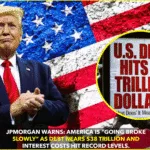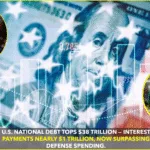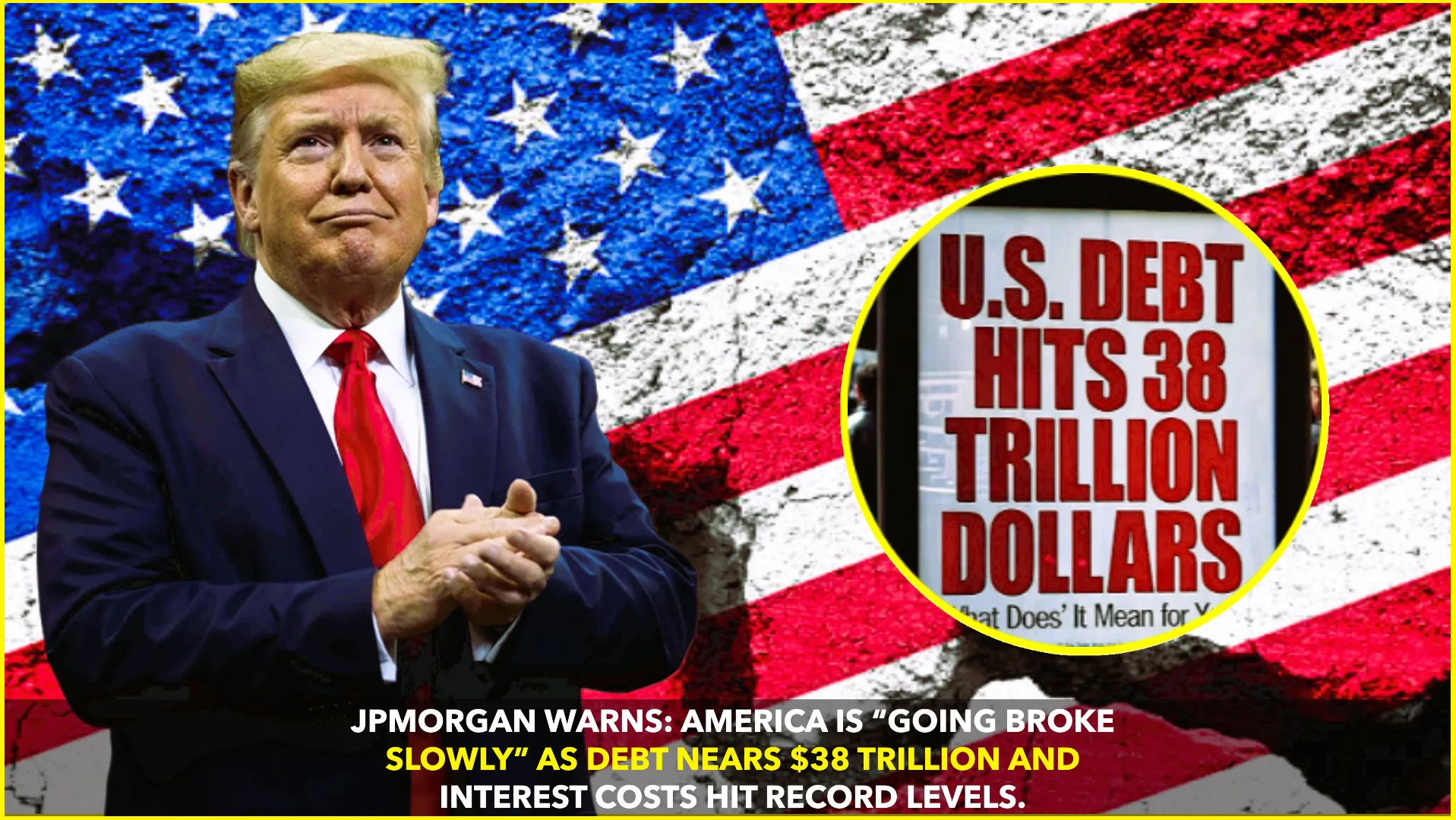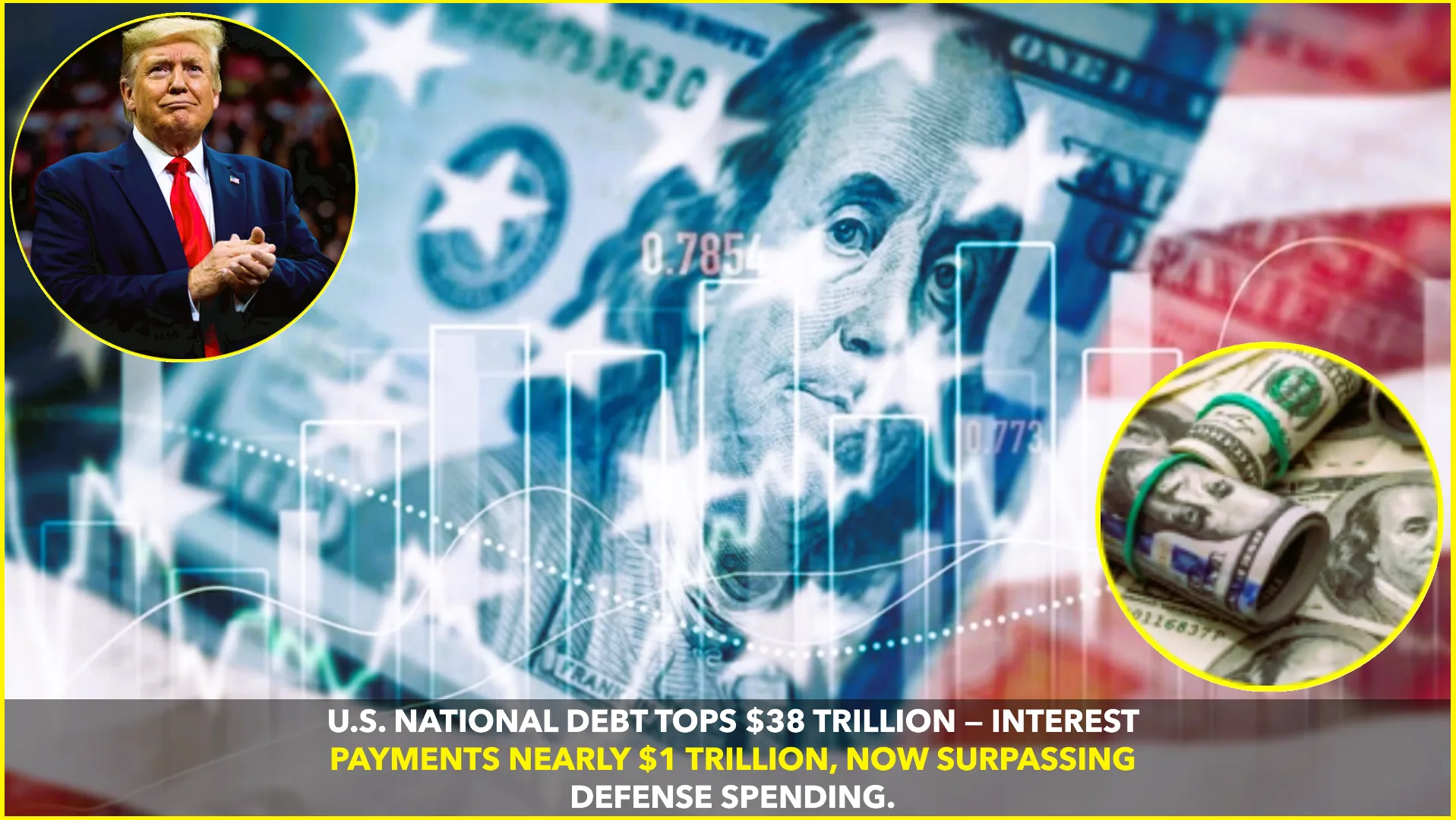America’s financial health is under severe strain, warns J.P. Morgan Asset Management’s Chief Global Strategist, David Kelly, who says the United States is “going broke slowly.” His warning highlights the growing danger of rising debt, soaring interest costs, and political inaction in Washington.
According to Kelly, the nation’s fiscal outlook is becoming unsustainable, with federal debt now nearing $38 trillion. Despite years of strong economic growth and low unemployment, government spending continues to far exceed revenues — a pattern that could eventually lead to serious financial stress if left unchecked.
(Source: Fortune)
Debt Growing Faster Than the Economy
Kelly explains that the U.S. is borrowing money faster than it’s generating income, a dangerous imbalance that erodes long-term stability. The annual deficit remains around 6 % of GDP, according to J.P. Morgan’s data, and is projected to keep rising due to high interest rates and expanding entitlement programs.
In simple terms, the government is spending more than it earns — and using new debt to pay off old debt. This cycle makes the U.S. increasingly dependent on borrowing, even for basic obligations.
(Source: J.P. Morgan Asset Management)
Interest Costs Becoming the Real Threat
What truly alarms Kelly is the rapid rise in interest payments, which are now among the fastest-growing items in the federal budget. The U.S. government is expected to spend nearly $1 trillion a year just on interest, surpassing major budget categories like defense spending.
This means that a growing share of taxpayer money goes toward servicing debt rather than funding infrastructure, innovation, or public services. In Kelly’s words, it’s a slow erosion of fiscal strength — one that could limit America’s ability to respond to future crises.
(Source: U.S. House Budget Committee)
Why It Matters Globally
The United States remains the cornerstone of the global economy, so its fiscal problems don’t stay confined within its borders. If U.S. interest rates spike further or confidence in Treasury bonds weakens, it could trigger ripple effects across global markets.
For India and other emerging economies, this could mean:
- Currency volatility — as investors shift capital toward the dollar for safety.
- Higher borrowing costs — since global interest rates tend to move with U.S. yields.
- Slower exports — if American consumer demand weakens under fiscal pressure.
In essence, when the U.S. sneezes, the world feels it — and if the U.S. “goes broke slowly,” everyone else faces the consequences too.
A Slow-Burn Crisis, Not a Sudden Crash
Kelly stresses that this isn’t an overnight collapse scenario. The U.S. still commands the world’s most trusted currency, and investors continue to buy its debt. However, this illusion of safety is what makes the crisis so insidious — it unfolds quietly, without immediate panic, until the problem becomes too large to reverse.
Unless policymakers make tough choices — cutting spending, reforming entitlements, or increasing revenue — America’s fiscal path could shift from “manageable” to “irreversible” in the coming decades.
Final Outlook
J.P. Morgan’s warning isn’t about fear-mongering; it’s a call for realism. America’s financial engine is powerful, but even the strongest system can break under the weight of unchecked debt and rising interest costs.
If the warning is ignored, Kelly suggests, the U.S. may soon face what he calls a “silent fiscal crisis” — one that chips away at growth, weakens global confidence, and leaves future generations paying the price.
For now, the clock is still ticking. But as Kelly bluntly puts it, “America is going broke slowly — and we’re running out of time to stop it.”










